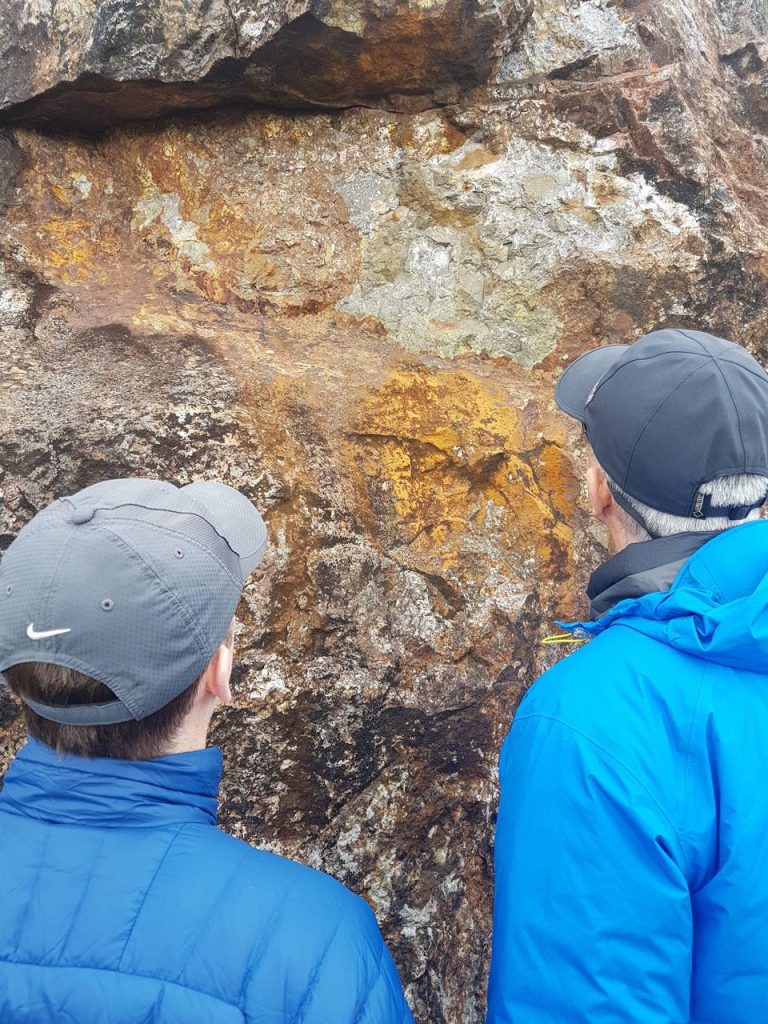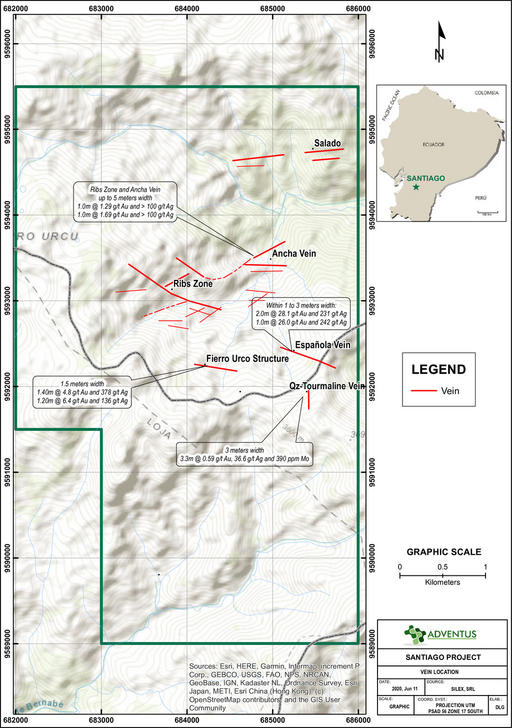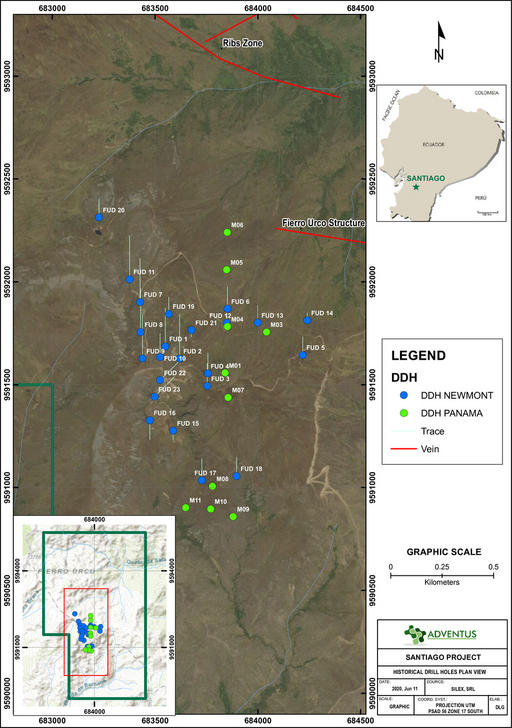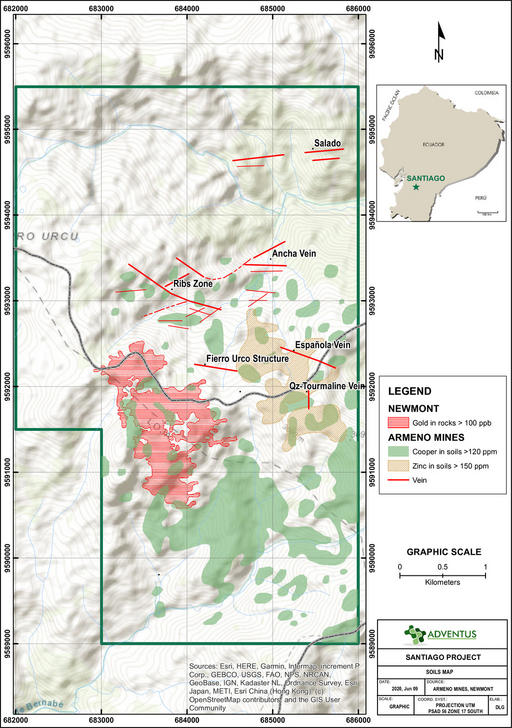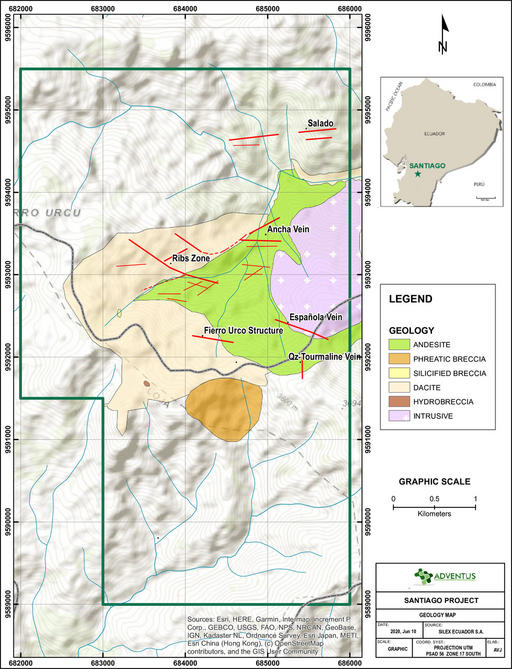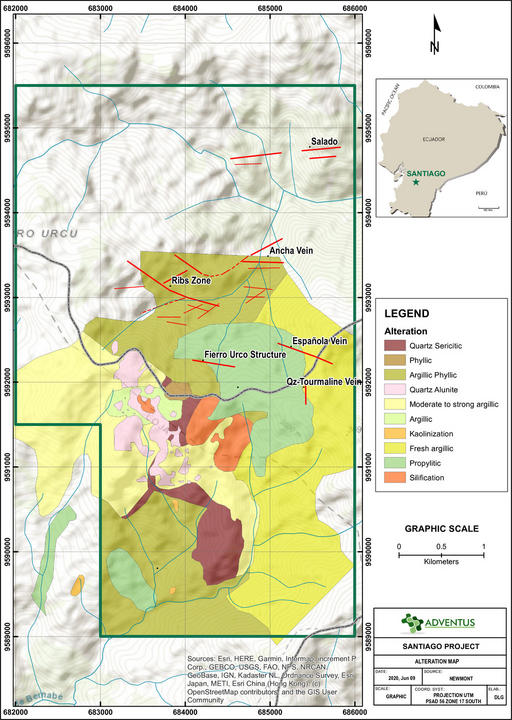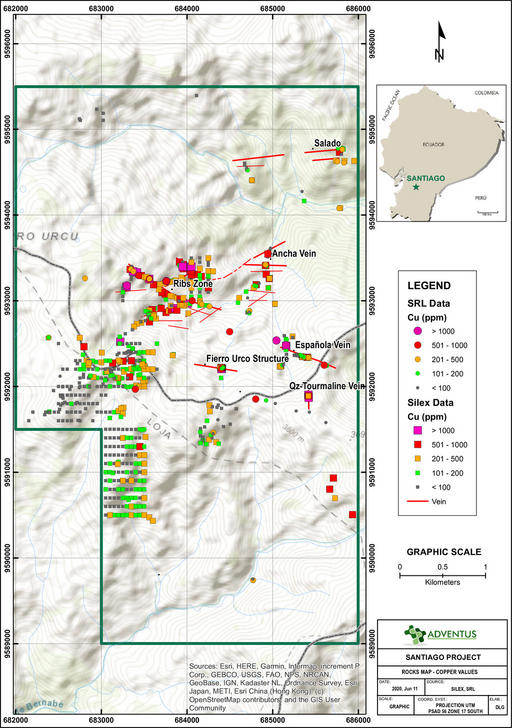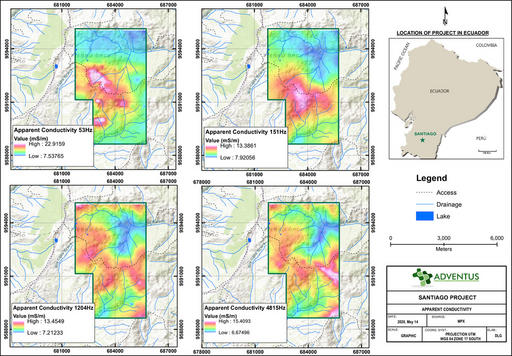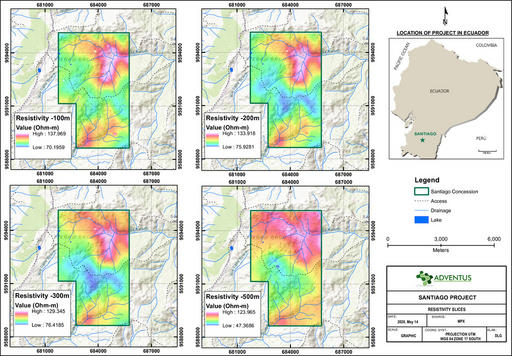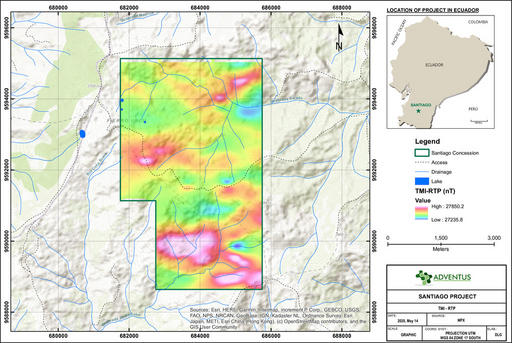- Home
- Corporate
- About Us
- Management
- Board of Directors
- Strategic Shareholders
- Mission, Vision, and Values
- Corporate Governance
- Projects
- Overview
- Why Ecuador
- Ecuador
- El Domo – Curipamba
- Condor
- Pijili
- Santiago
- Tres Picachos
- Tarqui
- Quimi
- Chalapo
- La Canela
- Orquideas
- Cascas
- Pegasus
- Ireland
- Exploration Alliance
- Equity Holdings
- Investors
- Stock information
- Company Presentation
- Financial Statements
- ESTMA
- Strategic Shareholders
- Environment & Community
- Annual General Meeting
- News

Ecuador
Santiago
The Santiago project is located in south-central Ecuador in the province of Loja, approximately 37 km north of the city of Loja. Santiago consists of one concession with an area of 2,350 hectares, which is controlled in a joint venture that is 80%-owned by Adventus and 20%-owned by Salazar Resources Limited. Adventus believes the Santiago project contains an untested copper-gold porphyry system and an epithermal target area denoted by a swarm of mineralized veins and breccia units.
The Santiago project has seen limited exploration in recent years, with Newmont Overseas Exploration Limited completing some drilling in the mid-1990s with a shallow program of 23 holes with an average depth of only 200 metres. Salazar completed some sampling of sulphide-bearing vein and breccia structures at surface in 2012. Historical intercept highlights include:
- 323 metres at 0.40 g/t gold and 0.23% copper (0.65% CuEq.) – FUD-01
- 171 metres at 0.55 g/t gold and 0.33% copper (0.91% CuEq.) – FUD-02
In 2019, Adventus completed an airborne Mobile MagnetoTellurics (“MobileMT”) geophysical survey that was flown over Santiago at 150-metre line spacing (see April 5, 2019 news release). The historical exploration results from prior owners were integrated with the MobileMT geophysical mapping (apparent conductivity, resistivity, RTP, and TMI-RTP magnetics) to generate preliminary target areas for validation in the field by crews.
During the pandemic in 2020 and 2021, Adventus focused on community outreach and public health initiatives in support of the small and remote communities in the project region. Limited field sampling programs and drilling preparations were completed but support for the full restart of exploration activities and employment opportunities has grown during the pandemic.
For additional information on historical exploration activities, Adventus-led activities since 2018, please refer to the Adventus news release dated June 15, 2020.
Santiago Highlights
- 2,350 ha on one concession in Loja province – district is prospective for large copper-gold porphyry targets
- Adjacent to +$100M earn-in joint venture between Newcrest Mining Limited and Cornerstone Capital Resources as well as mineral concessions controlled by SolGold plc
- High-sulphidation system previously drilled by Newmont with potentially economic copper-gold intercepts over 100-325 m intervals from surface
- Large MMT airborne survey completed in 2019 resulting in numerous copper porphyry targets – principal target is a large prospective porphyry (3,000 by 2,000 metre) with coincident prospective geology, a wide-spread hydrothermal alteration footprint, an extensive gold and copper surficial geochemistry anomaly, and a coincident airborne MobileMT geophysical anomaly. Secondary target is an epithermal target area denoted by a swarm of mineralized veins and breccia units
- Target generation work is ongoing, with an initial drill program envisioned
Next Steps
The principal target area at Santiago has coincident geological, geochemical and geophysical indicators that include quartz-alunite alteration, a large gold rock chip geochemical anomaly identified by Newmont (~ 2,200 by 600 metres), and both a low frequency apparent conductivity geophysical and resistivity anomaly of approximately 3,000 by 2,000 metres, and TMI-RTP magnetic low of approximately 2,000 by 1,500 metres that is encircled by areas of higher magnetic response. The magnetic low is suggestive of magnetic mineral destruction from hydrothermal alteration. This principal target is also coincident with historical drilling by Prospection and Newmont; however, a 3D review indicates that due to the short drill hole lengths, these two historical drilling programs do not provide an explanation for the large MobileMT geophysical anomaly, which suggests that additional, deeper drilling is warranted. The high priority targets have been generated and a future minimum 3,000-metre drilling program is envisioned.

Road to Santiago 
Santiago Outcrop 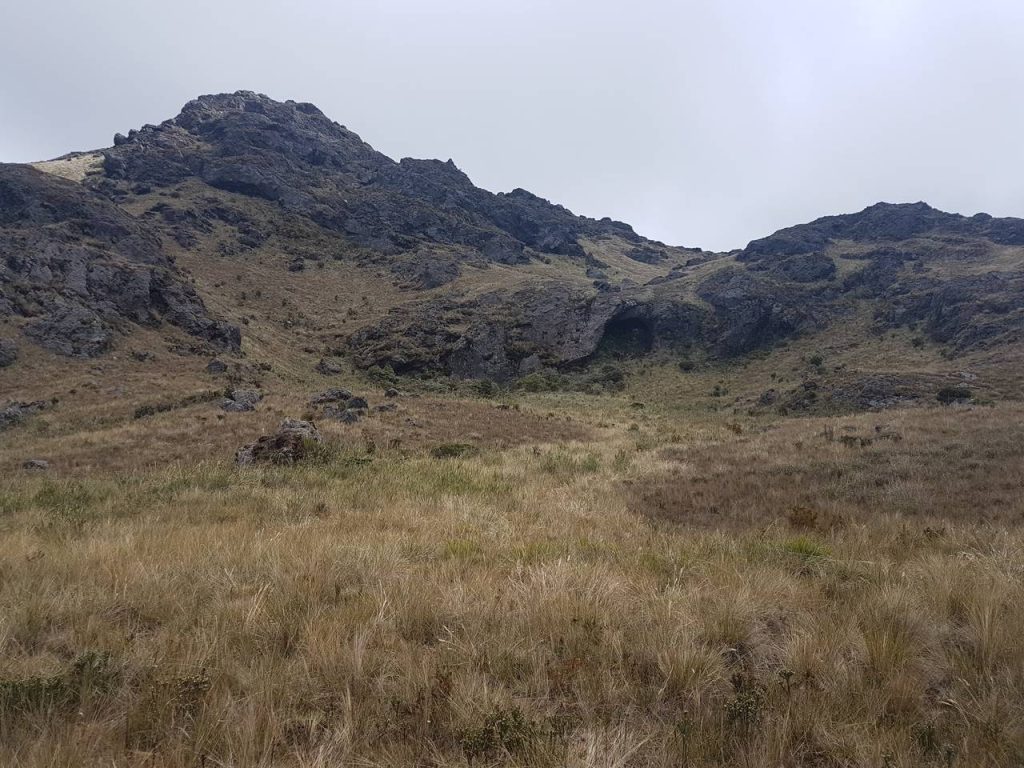
Santiago Landscape
